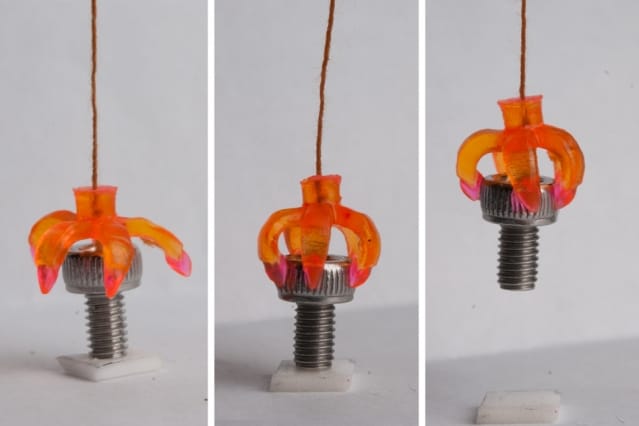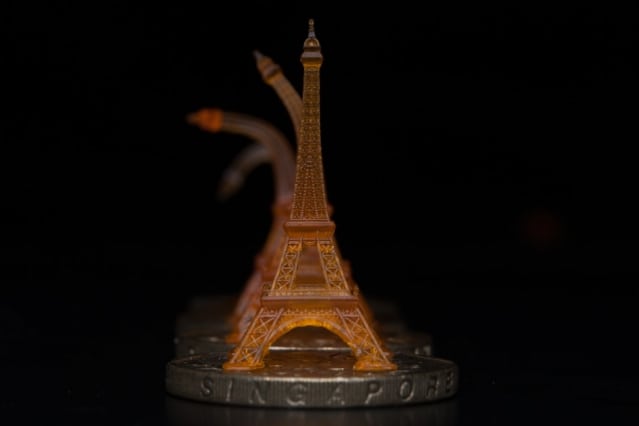The polymer mix used by the team is rigid at room temperature, but rubbery and pliable when heated above a certain point (40-180 degrees Celsius). This means it can be printed in a particular shape, ‘frozen’ in a different shape at room temperature, then reactivated into the printed shape through heating. Potential applications include actuators for solar panels, and drug delivery devices that open when infection is detected.

“We ultimately want to use body temperature as a trigger,” said Nicholas X Fang, associate professor of mechanical engineering at MIT. “If we can design these polymers properly, we may be able to form a drug delivery device that will only release medicine at the sign of a fever.”
Conventional 3D printing is commonly used to make custom designs of memory materials. However, this technique only allows the user to create designs with details no finer than a few millimetres. For the more intricate designs that they required, the MIT and SUTD team pioneered a new method called microstereolithography, where they used light from a projector to print patterns on successive layers of resin.
“We’re printing with light, layer by layer,” Fang explained. “It’s almost like how dentists form replicas of teeth and fill cavities, except that we’re doing it with high-resolution lenses that come from the semiconductor industry, which give us intricate parts, with dimensions comparable to the diameter of a human hair.”

The team printed a variety of structures, including coils, flowers, and a miniature Eiffel Tower. They found the structures could be stretched to three times their length without breaking, and snapped back to their original shapes within seconds when exposed to heat in the range of 40 C to 180 C. The team also produced a small, rubbery, claw-like gripper, which when exposed to heat could clasp around objects to pick them up.
“The grippers are a nice example of how manipulation can be done with soft materials,” said Fang. “We showed that it is possible to pick up a small bolt, and also even fish eggs and soft tofu. That type of soft grip is probably very unique and beneficial.”




Project to investigate hybrid approach to titanium manufacturing
What is this a hybrid of? Superplastic forming tends to be performed slowly as otherwise the behaviour is the hot creep that typifies hot...